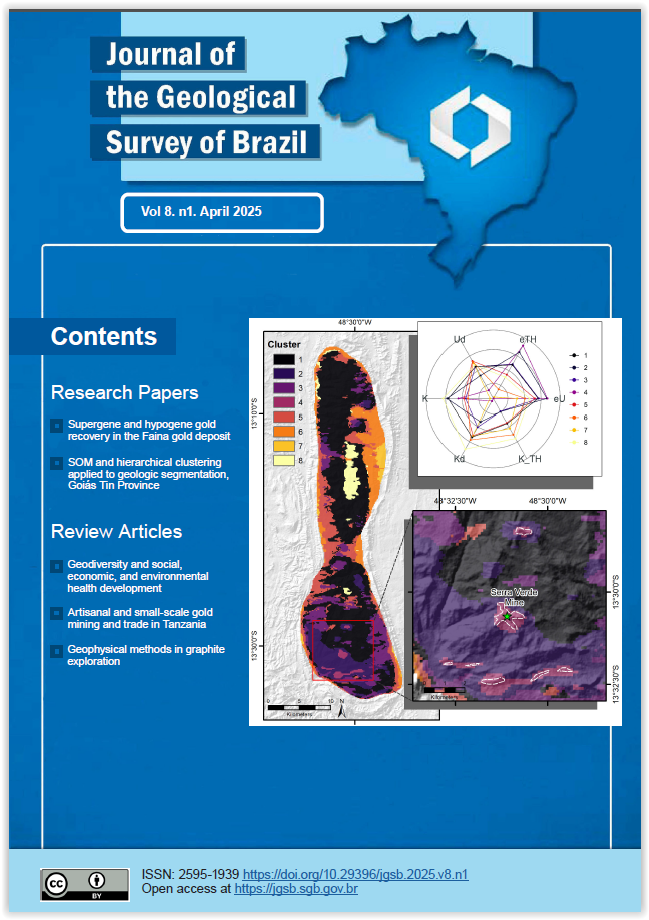Geophysical methods in graphite exploration: A review
Main Article Content
Abstract
Graphite, with its unique thermal, electrical, and chemical properties, is crucial for technologies like energy storage and advanced materials. However, exploring graphite deposits is challenging due to the variability in crystallinity, purity, and distribution within host rocks, which complicates geophysical data interpretation. This study reviews 20 articles on geophysical methods for graphite exploration, analyzing their advantages and limitations, in addition to incorporating insights from 53 other articles to support discussions on graphite properties and geophysical techniques. Electrical methods, such as resistivity and induced polarization, effectively delineate mineralized zones but are constrained by limited spatial coverage. In contrast, magnetic and electromagnetic techniques provide broader survey coverage and greater cost-efficiency, making them valuable for regional exploration, despite their lower resolution in distinguishing graphite from other minerals. Effective exploration requires integrating regional geological surveys with high-resolution investigations by academia and industry. Understanding the geophysical signatures of different graphite deposit types — like lump, flake, and amorphous graphite — is essential for refining exploration strategies and improving discovery rates. By combining large-scale data with focused studies, exploration efforts can be optimized, enhancing the identification and assessment of graphite resources.
Article Details

This work is licensed under a Creative Commons Attribution 4.0 International License.
The papers are published in the open access format, being freely available to any user, under a CC-BY Creative Commons license.
By submitting this manuscript for evaluation, the authors are aware of the CC-BY Creative Commons license. In the case of manuscript approval, the author responsible for the manuscript (corresponding author), hereinafter referred to as CEDENTE (ASSIGNOR), hereby assigns and transfers to CPRM-Serviço Geológico do Brasil, holder of the JGSB, free of charge, on his behalf and on behalf from all co-authors, the right of the first publication. This includes the rights of editing, publication, translation into another language and reproduction by any process, worldwide, today and in the future.
After the first publication by the JGSB, authors hold the copyright without restrictions and are allowed to disclose and distribute their work through personal website pages and institutional repositories.
At the same time, the ASSIGNOR declares that the content of the manuscript is of sole responsibility of the authors and that this content does not infringe the copyrights and/or other property rights of third parties, that is, that any contents of the manuscript and its attachments, if taken from other publications, are duly referenced and, when necessary, the permissions for publications of such contents were requested by the authors from the copyright holders; that the disclosure of images (if any) has been authorized and that it assumes full moral and/or patrimonial responsibility, due to its content, before third parties.





